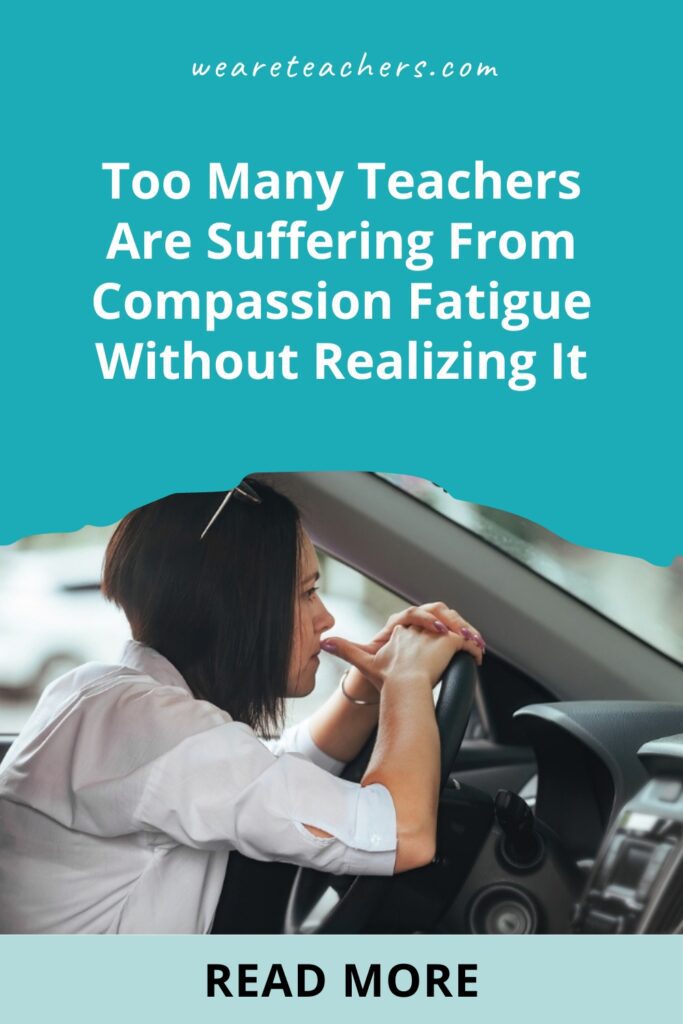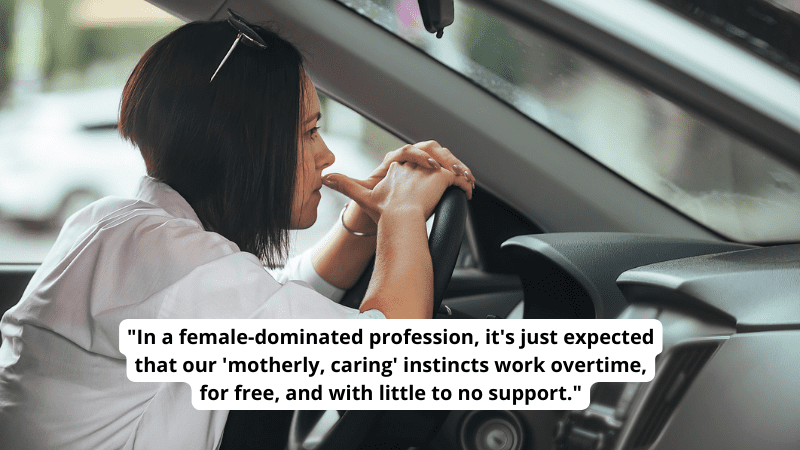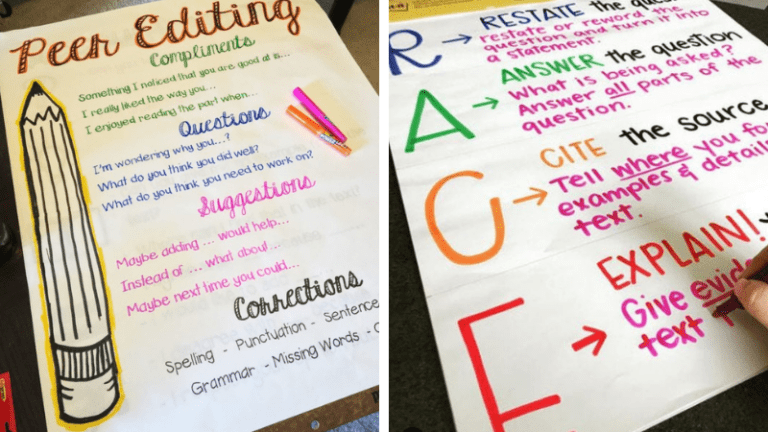Content warning: This post discusses death and school violence.
As teachers, we’re all too familiar with the concept of teacher burnout. The data shows just how pervasive it is, with K-12 teachers maintaining the highest burnout rates of all industries in the United States. Something not often talked about as a contributing factor to burnout is compassion fatigue. Many teachers are prone to compassion fatigue and probably experience signs and symptoms of compassion fatigue without even being aware. So what exactly is compassion fatigue and why does it matter to us as educators?
What is compassion fatigue?
Carla Joinson first described compassion fatigue in 1992 in the field of nursing. Joinson highlighted that nurses displayed signs and symptoms of burnout directly linked to the caregiving required in their jobs. Charles Figley (1995) expanded upon Joinson’s definition by describing the condition as a secondary traumatic stress disorder or response directly related to the feelings of helplessness and psychological distress experienced by individuals in helping professions.
The signs and symptoms of burnout and compassion fatigue may appear similar: chronic physical and emotional exhaustion, disassociation, absenteeism, mental health challenges such as depression, anxiety, or PTSD, difficulty sleeping, feeling detached and overwhelmed, and general loss of interest. However, a distinct difference is that burnout often occurs over an extended period from work overload whereas compassion fatigue can occur almost immediately as a reaction to an event or circumstance.
How to recognize compassion fatigue in teachers
Surprisingly, we don’t talk about compassion fatigue more. In a female-dominated profession, it’s often expected that our “motherly, caring” instincts work overtime, for free, and with little to no support. But this ignores every educator’s identity as a human being, with feelings, empathy, and limits in emotional and physical capacity. We care for students who may at any point in time be experiencing a variety of challenges. From hardships at home such as homelessness, food insecurity, and trauma, to challenges at school including bullying and school violence, the problems our youth face are innumerable. As we care for our students day in and day out, our empathetic nature may reach a breaking point. Emotional labor is still labor.
I discovered for myself the impact of compassion fatigue. After five years of working in the special education field teaching students with rare medical disorders and disabilities, I reached my breaking point. Within a few years, more than 10 of my students died a result of medical complications due to their disabilities. I was trying to teach, grieve, and support my grieving students at the same time. But because I wasn’t aware of the concept of compassion fatigue, the inability to take care of myself compounded by the demands of my job continued to fester until I reached full burnout.
The good news is that compassion fatigue has a quicker recovery time compared to burnout. If we recognize the signs and symptoms early, we may be able to intervene and prevent full-blown burnout.
Knowledge is power: using our experience to heal
The first step is to educate yourself, your fellow teachers, and your administration on compassion fatigue with the help of the resources listed below, such as the Figley Institute’s Compassion Fatigue Workbook and the ABCs of Addressing Compassion Fatigue, which are available at no cost. If you are experiencing compassion fatigue that is impacting your well-being, it is OK to take a break from teaching and try a different career, either temporarily or permanently. With awareness and education about compassion fatigue, we acknowledge that teachers are human too—they have feelings that must be supported and addressed in order to nurture the next generation of compassionate leaders.
Find more resources for teachers here:
ABCs of Addressing Compassion Fatigue
Compassion Fatigue and Self-Care for Crisis Counselors
Compassion Fatigue: Symptoms To Look For
Six Ways for Educators to Avoid Compassion Fatigue
If you or someone you know is in immediate distress or is considering self-harm, call the National Suicide Prevention Lifeline toll-free at 988 (new as of 2022) or (800) 273-TALK (8255).
References:
Joinson C. (1992). Coping with compassion fatigue. Nursing, 22(4), 116–120.
For more content like this, be sure to sign up for our free newsletters.


